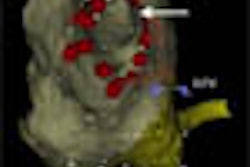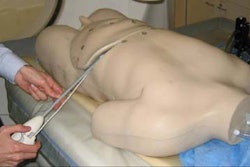The lifetime incidence of uterine fibroids in the U.S. is nothing to scoff at -- some studies put it at more than 80% for African-American women and more than 70% for Caucasian women. The condition is often addressed with invasive surgery. Given how common uterine fibroids are, how expensive they can be to treat, and the penny-pinching philosophy espoused by most healthcare system, what is the economic impact of leiomyoma cases?
The answer remains unclear because there is scant published information on the economic burden of this disease, according to a report in the Journal of Women's Health (October 2005, Vol. 14:8, pp. 692-703). Nevertheless, a multi-institutional group went ahead and performed a meta-analysis of existing literature on uterine fibroids. They surmised that a great deal of research on the subject was still badly needed.
Josephine Mauskopf, Ph.D., and colleagues mined 51 papers from medical literature databases, including Medline, and 10 papers from Web sites such as the Society of Interventional Radiology (SIR).
Mauskopf is from RTI Health Solutions in Research Park Triangle, NC. Her co-authors are from the University of Rochester in New York and TAP Pharmaceutical Products in Lake Forest, IL.
Some of the published figures that the researchers found noteworthy included the following:
The per-patient cost for myomectomy was $7,360, while uterine artery embolization (UAE), or uterine fibroid embolization (UFE), came in at $6,708. The authors pointed out that professional fees for UAE were greater than for myomectomy, although myomectomy was more expensive all-around.
The average length of stay for all patients undergoing hysterectomies fell from 3.9 days in 1993 to 2.8 days in 2001. However, the average charges rose from $8,661 in 1993 to $12,011 in 2001.
Procedure costs for myomectomy can range from $5,425 to $11,839; for hysterectomy the cost can range from $5,012 to $7,934; and for UAE from $5,425 to $7,645.
In one study, complete symptom relief following treatment or menopause was achieved in 89.9% of the cases with myomectomy. The same was true in 83.4% cases treated with hysterectomy and 35.5% with a watch-and-wait approach.
UAE is more effective and less costly than hysterectomy at 8.29 quality-adjusted life years (QALYs) and $6,916 versus 8.18 QALYs and $7,847.
UAE is more costly than no treatment ($7,847 versus $6,196). This may be an issue for women who have uterine fibroids but are asymptomatic.
The authors pointed out that "the economic value of myometomy and UAE also depend critically on the rate at which hysterectomy is required after these procedures."
Ultimately, they decided that "to fully understand the economics of uterine fibroids, researchers need to document the natural history of the disease from onset to resolution." In addition, lifetime cost-effectiveness models need to be created to compare alternative treatment pathways, including a head-to-head trial of management strategies. Finally, the costs associated with symptoms remains unmeasured.
By Shalmali Pal
AuntMinnie.com staff writer
November 23, 2005
Related Reading
Uterine artery embolization effective long-term for leiomyomata, November 8, 2005
Diffusion-weighted MR noninvasively monitors uterine fibroid therapies, September 9, 2005
ACOG study shows UFE is more cost-effective than surgery, June 17, 2005
Post-UFE complications rare, but may require more serious surgery, June 13, 2005
Copyright © 2005 AuntMinnie.com



















